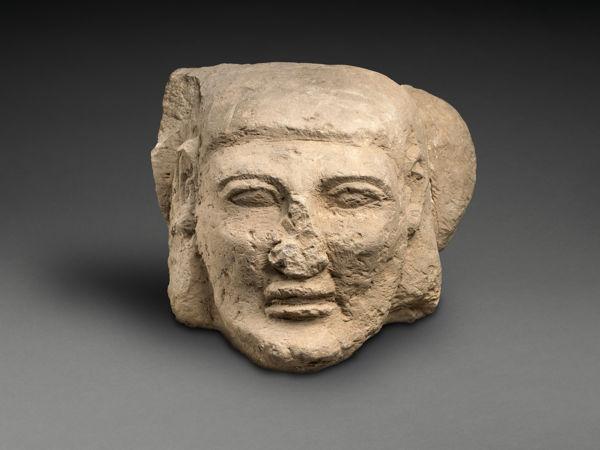
Object Title
Monumental Head of a Foreigner
Measurements
H. 33 × W. 44 × D. 49.5 cm, 146.1 kg (13 × 17 5/16 × 19 1/2 in., 322 lb.)
Creation Date
ca. 1295–1070 B.C.
Credit Line
Gift of Lewis and Elaine Dubroff, in celebration of the Museum's 150th Anniversary, 2017
Museum Name
Culture
Country of Origin
Object Type
Materials / Techniques
Object URL
https://www.metmuseum.org/art/collection/search/767641
Provenance Information
By 1967, Collection of Vincent Diniacopolous, Montreal (supported by undated photograph in family archive); Diniacopolous family, Montreal, by descent, 1967-1999; their sale, Sotheby’s, June 6, 1999; purchased at Sotheby’s by Elaine and Lewis M. Dubroff; Collection of Elaine and Lewis M. Dubroff, 1999-2017; Gift of Elaine and Lewis M. Dubroff to The Metropolitan Museum of Art, 2017.
Exhibition Information
None.
Publication Information
Sotheby’s New York, June 5, 1999, p. 24 (no. 38), “A Monumental Limestone Head of a Vanquished Foreigner.”
Section of the AAMD Guidelines relied upon for the exception to 1970
Informed judgement that works were outside of the country of modern discovery before 1970
Explain why the object fits the exception set forth above
This work has provenance confirmed to 1999 when it was sold at auction by Sotheby’s as a work from a private North American collector. The Metropolitan Museum of Art has provenance information back to the early 1960s that is supported by circumstantial evidence. Vincent Diniacopolous (1886-1967) was a Canadian dealer, who was first established shops in Cairo, Paris, and Southern France in 1922 before moving to Montreal in 1951. An early photograph in the family’s archive, now in Concordia University in Canada, suggests that the piece was on the art market as early as 1910s or 1920s, when Diniacopolous was in Egypt. He stopped acquiring pieces already in the early 1960s, due to a serious health problem, and the collection remained in his family following his death in 1967. This imposing head is a collection-changing addition to the Museum’s holdings because it is an architectural element of monumental size from a Ramesside building. During the Ramesside Period (ca. 1295-1070 B.C.), Egypt’s kings concentrated on the construction of public structures and the control of their empire, and our collection does not appropriately reflect this important time.